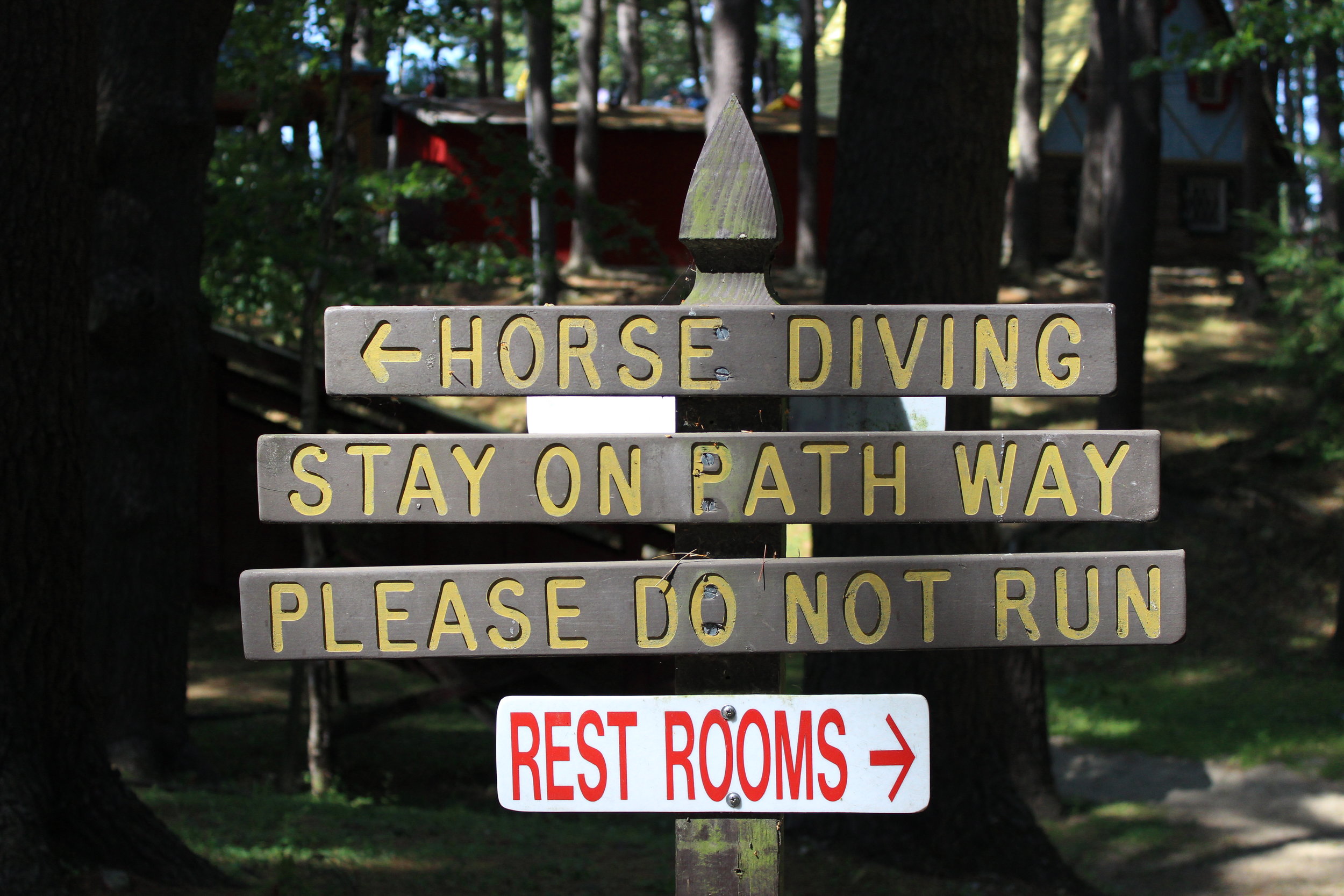Travel Guide: Roosevelt Island
To say that I love Roosevelt Island would be an understatement. Whenever I’m feeling down, a walk around the sometimes strange, mostly peaceful island with a sordid history always sets me right. If you don’t know much about the island’s history, I recommend that you read this book before you go, and keep your eye open for hidden bits of the island’s various lives.
GETTING THERE:
The best part of visiting Roosevelt Island might just be getting there—the fastest and most whimsical way is to ride the Roosevelt Island tram. For the cost of a Metrocard swipe (currently $2.75), you can ride the first commuter aerial tramway in North America. Open in 1976, the tram isn’t operated by the MTA, and it runs every 7-15 minutes from 6am-3:30am on the weekends and until 2am on weekdays from Tramway Plaza at 59th Street and Second Avenue.
On the east side of the island, right beneath the parking garage, you can see a few of the old tram cars. They were upgraded during renovations in 2010, and may one day be preserved in a museum, but they’re currently sitting partially covered by a tarp (and recently, some uninspired graffiti).
Subway / Bridge / Ferry / Bus
Roosevelt Island is also accessible by the F train via one of the deepest stations (100 feet below ground) in the subway system. Additionally, you can walk or drive to RI from Astoria via the Roosevelt Island bridge (and park in the huge Motorgate garage), or take the new Astoria Ferry.
Once you’re on the island, I recommend walking, but the Red Bus, operated by the RIOC, is free and makes frequent stops. The Q102 bus also circles the island, and connects RI to Queens.
WHAT TO DO:
Located in a retired street car kiosk right near the tram stop and operated by the Roosevelt Island Historical Society, the Visitor Center is a good place to start your journey. Stop here for quirky RI and New York City-themed souvenirs and books or for a map of the island.
Open Wednesday-Monday, 12-5pm.
Take a walk
Roosevelt island is two miles long and .15 miles wide, and I recommend walking from one end to the other. With views of the Manhattan skyline on one side and Long Island City on the other, the walkways are every bit as scenic as the Brooklyn Heights Promenade but much more peaceful. The west side is lined with cherry trees that are beautiful all year round, and the east side has a good view of the Queensboro and Roosevelt Island bridges.
Roosevelt Island is part of New York City with about 14,000 permanent residents but it still feels like a completely different world. They have a post office, library, public school, two churches and a few stores on Main Street. There is also a rehab hospital, a brand new Cornell Tech campus and a tiny cat sanctuary.
But the most fascinating thing about Roosevelt Island that you might not notice is how they dispose of their trash—by an underground pneumatic tube system. Installed in 1975, when the only other pneumatic garbage system in the US was at Disney World, the system allows residents to throw their trash down chutes where it piles up until it's whisked away—by an AVAC system that sucks up about six tons of trash a day.
Smallpox Hospital
Designed by James Renwick Jr. and opened in 1856, the Smallpox Hospital is currently the only ruin within city limits to have been designated a New York City Landmark (it's also on the National Register of Historic Places). There have been plans to further stabilize the Smallpox Hospital and open it to the public, but for now it just sits in ruin, a reminder of Roosevelt Island’s history as a receptacle for all of the city's undesirables. In the fall, the climbing ivy turns brilliant shades of red, and at night the dramatic lighting manages to make the site seem even more sinister.
Four Freedoms is a four-acre park located on the southern tip of the island, dedicated to the 32nd President (and the island’s namesake). Franklin D. Roosevelt delivered his eighth State of the Union address, known as the Four Freedoms speech on January 6, 1941, and a portion of the that famous speech is etched on a granite block in the park. The memorial is a procession of open-air spaces, culminating in a 3,600-square-foot plaza surrounded by 28 blocks of North Carolina granite, and a bust of Roosevelt, sculpted in 1933 by Jo Davidson.
Open October 1 - March 31, 9am-5pm; April 1 - September 30, 9am-7pm; closed Tuesdays, free.
The Strecker Laboratory
Built in 1892, the Strecker Laboratory was the first laboratory in the country devoted exclusively to pathological and bacteriological research for the nearby City Hospital. In 1972, it was added to the National Register of Historic Places, and in 1976 it was designated a New York City landmark. The MTA refurbished the building's exterior and it has housed a power conversion substation powering the subway trains that run underneath Roosevelt Island since 2000.
The Blackwell House
Built for James Blackwell between 1796 and 1804, this house is the only building on Roosevelt Island from when the island was still privately owned. The Blackwell family owned the island from the late 17th century until 1828, when it was sold to the city. In 1829, with the building of the penitentiary, the Blackwell House became the residential quarters for administrators. Placed on the National Register of Historic Places in 1972, and restored in 1973, the Blackwell House is currently undergoing renovations to be used as community space offering historical tours and a library with space to store the Roosevelt Historical Society's archives.
The Octagon, built in 1834, originally served as the main entrance to the notorious New York City Lunatic Asylum (the setting of Nellie Bly’s exposé, Ten Days in a Mad-House). In true New York City fashion, the Octagon was renovated and in 2006, the five-story rotunda made of blue-gray stone quarried on the island reopened as the lobby of a luxury housing complex containing 500 apartments.
Blackwell Island Lighthouse
Designed by the architect of the Smallpox Hospital, James Renwick Jr., this 50-foot-tall, gray gneiss, Gothic-style lighthouse was built in 1872. Built by inmates of the penitentiary with stone extracted from the island, the lighthouse was named to the National Register of Historic Places in 1972 and was designated a New York City Landmark in 1976. The light was operated until about 1940. Because of its vulnerable location at the northernmost tip of the island, the park has frequently been closed when I’ve visited due to weather-related damages from Hurricane Sandy and most recently an October nor’easter.
The Marriage of Real Estate and Money Sculptures
If you peek over the railing on the western bank of the island, into the East River between RI and Manhattan, you’ll see three sculptures by Tom Otterness. Installed in 1996 and titled The Marriage of Real Estate and Money, “the sculptures make a statement situated between the dueling residential developments on both Roosevelt Island and Midtown East.” If Otterness’s work looks familiar, you may have seen his little mischievous figures in the 14th Street subway station.
Stay for sunset
One advantage of the sun setting so early in the winter is that you don’t have to stay out too long to catch a beautiful sunset. Roosevelt Island is the perfect place to watch the sun set behind the Manhattan skyline, and I was lucky to catch one of the best sunsets I’ve ever seen while waiting to see the Smallpox ruin at night.
WHERE TO EAT:
For all of its charm, the one area where Roosevelt Island is lacking is in food options. There are a few chain outposts: Duane Reade, Gristedes, Subway and Starbucks, in addition to a bubble tea shop, sushi bar and classic Chinese takeout.
I did finally eat at the pizza joint right next door to Starbucks on my most recent visit, and despite the lackluster reviews, it was exactly what I wanted: hot, greasy, thin crust New York pizza. I ordered a personal pie to go and ate it by the river, but you can dine-in as well.
Want more? See all of my Roosevelt Island posts here.

























































